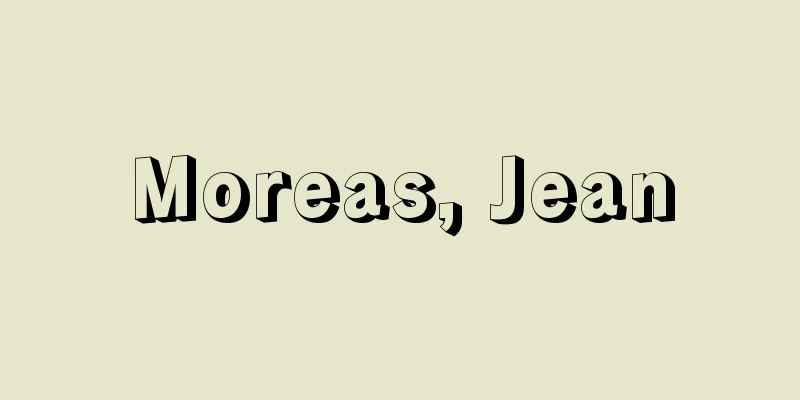Pile-built dwellings

|
A style of dwelling in which a large number of logs are driven into the water or marshland on the shore of a lake or sea, and crossbeams are then laid on top of the logs to create a foundation. In addition to being convenient for livelihood and transportation, it is thought to have served to protect against moisture, harmful animals, insects, and enemies. Ethnological examples can still be seen today in Southeast Asia and other places. Archaeologically, the so-called lake dwellings found in the lake regions of Switzerland and Germany, and the pile dwellings of the Terramare culture in Italy are well known. In Switzerland, the Corteljo ruins on the shores of Lake Neuchâtel, which were built from the Neolithic to the Bronze Age, are well known. This ruin belongs to the Corteljo culture, which was established around 3000 BC when the indigenous Mesolithic culture adopted agricultural techniques from the Chassay culture in France. Excavations have revealed that they cultivated wheat, beans, apples, etc., and while they kept livestock such as cattle, pigs, sheep, and goats, they also engaged in traditional hunting and fishing activities such as net fishing and harpoon fishing in the lake, and hunting deer and wild boar on land with bows and arrows and bone spears. Hunting and fishing became more important again, especially in the later period. The Eichbühl ruins on the shores of Lake Feder in Germany are from the same period as the Corteljo culture. 24 pile dwellings were discovered, and the dwellings were log cabins with square gable roofs measuring 5-6 meters on each side, with two rooms inside. The pile dwellings of the Terra Mare culture are distributed in the low-lying marshes along the Po River in northern Italy. The settlements were surrounded by fences and moats, and the inhabitants lived inside them. This culture belongs to the Bronze Age. [Ushio Maeda] [Reference] |Source: Shogakukan Encyclopedia Nipponica About Encyclopedia Nipponica Information | Legend |
|
湖岸や海岸の水辺や湿地に丸太を多数打ち込んで、その上に横木を並べて土台として設営した住居様式。生業、交通の便のほか、湿気や害獣・害虫、敵などの侵入を防ぐ機能をもつと考えられる。民族学的な例としては、現在でも東南アジアなどにみられる。 考古学的にはスイス、ドイツの湖沼地帯に発見されるいわゆる湖上住居や、イタリアのテラマーレ文化の杭上住居が有名である。スイスの湖上住居では、新石器時代から青銅器時代にわたって営まれたヌーシャテル湖岸のコルテヨ遺跡などが知られている。この遺跡は、土着の中石器文化が、紀元前3000年ごろフランスのシャセイ文化から農耕技術を取り入れて成立したコルテヨ文化に属する。発掘によって麦類、豆類、リンゴなどの栽培が知られ、また、ウシ、ブタ、ヒツジ、ヤギなどの家畜を飼うかたわら、湖での網漁、銛(もり)漁、陸上での弓矢や骨槍(やり)を用いたシカ、イノシシ猟など伝統的な狩猟、漁労活動も行った。とくに後期になるとふたたび狩猟漁労の比重が大きくなった。ドイツのフェーダー湖岸のアイヒビュール遺跡は、コルテヨ文化と同時期のものである。24軒の杭上住居が発見され、住居は、1辺5~6メートルの方形の切妻屋根の丸太小屋で、屋内は2室に分かれていた。テラマーレ文化の杭上住居は、北イタリア、ポー川沿岸の低湿地に分布する。集落の周囲に柵(さく)と濠(ほり)を巡らし、その中に居住した。この文化は青銅器時代に属する。 [前田 潮] [参照項目] |出典 小学館 日本大百科全書(ニッポニカ)日本大百科全書(ニッポニカ)について 情報 | 凡例 |
<<: Huangniangniangtai Ruins (English: Huáng niáng niáng tai yí zhǐ)
Recommend
Peridot
…On the other hand, olive was mistakenly translat...
Large cranberry
...The berries are spherical, red when ripe, abou...
Kiyomizu Bridge
...A bridge over Gojo-dori (before 1589, Matsubar...
Minho (English spelling)
Portugal's northwestern region includes the co...
Dreyer, Carl Theodor
Born: February 3, 1889 in Copenhagen [Died] March ...
Electrochemical equivalent
When a pair of electrodes is placed in a solution...
Subtropical Glow - Anettaiguro
…This change reflects the change in density of at...
Cho Kwang-jo (English spelling)
1482‐1519 A Confucian scholar and official of the ...
Kaida Plateau
(Kiso Town, Kiso District, Nagano Prefecture) A to...
Lutheran Church - Luther is a church
The largest Protestant denomination. Also called t...
Teshio River
A large river that flows through the northern par...
Brezovački, T.
...However, it was not until the 19th century tha...
Jakob, A. (English spelling) JakobA
…A neurological disease described by Hans G. Creu...
Tomoatsu Godai
Year of death: September 25, 1885 (Meiji 18) Year ...
House tax - Kaokuzei
Generally, this is a tax that is levied on the own...









